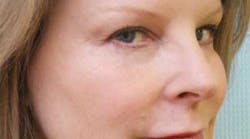By Carri Cady Fiori, RDH, VP of Sales and Marketing for Oral BioTechATP (Adenosine Tri-Phosphate) measurement was developed to estimate bacterial cell numbers in biological samples to ensure microbiological quality. The bioluminescent luciferin-luciferase method has largely been used in order to evaluate the ATP content in living cells from numerous biological media including dental plaque.(1)As it turns out, when looking to identify the presence of the bacteria at play in the caries infection, ATP is an extremely predictive biomarker for acidogenic and aciduric organisms. These bacteria survive and thrive in acidic pH environments because they have the ability to pump the hydrogen ions (protons) out of their cell. This requires a tremendous expenditure of ATP.(2) Therefore ATP bioluminescence provides a clear look into the acidic nature of the biofilm and its potential to cause the net mineral loss associated with cavity formation.Scientific studies of this technology highlight a couple of key features. Not only is this diagnostic tool highly predictive of caries risk (3,4,5,6), and significantly superior when compared to other commercially available diagnostic tools(7), but it is extremely accurate with low incidence of false positives and negatives.
Clinical use of the technology highlights other desirable features in that it provides an instant, chair-side quantification of caries risk that allows the dental practitioner to make a baseline caries risk diagnosis as well as monitor anti-caries treatment outcomes. The patient benefits from the objective quantification of the risk associated with their individual biofilm behavior which leads to greater case acceptance and compliance with recommended risk modifications and therapeutic intervention.Currently, this technology is exclusive to the CariScreen Meter carifree.com/dentists/products/cariscreen.php, part of the CariFree System by Oral BioTech, a complete program from diagnosis to treatment, for performing CAMBRA (Caries Management by Risk Assessment).To view a PDF of the CariScreen Caries Susceptibility Testing Meter and Swabs, go to CariScreen.References
1. Gallex F, Fadel M, Scruel O, Cntraine F, Couirtois P. Salivary Biomass Assessed by Bioluminescence ATP Assay Related to (Bacterial and Somatic) Cell Counts2. Alice CL Len, Harty DWS, Jaques AJ. Stress-responsive proteins are upregulated in Streptococcus mutans during acid tolerance. Microbiol 150 (2004) 1339-1351.3. Sauerwein R, Pellegrini P, Finlayson J, Kimmell J, Kasimi I, Covell D, Maier T, Machida C. Oregon Health & Science University, Portland, USA. ATP Bioluminescence: Quantitative Assessment of Plaque Bacteria Surrounding Orthodontic Appliances. IADR Abstract #1288 2008.4. Fazilat S, Sauerwein R, Kimmell I, Finlayson T, Engle J, Gagneja P, Maier T, Machida C. Application of ATP driven bioluminescence for quantification of plaque bacteria and assessment of oral hygiene in children. Ped Dent May/June 2010. 32(3):195-204.5. Hallett KB, O’Rourke PK. Oral biofilm activity, culture testing and caries experience in school children: O02-11. Oral Session O02/Cariology 2 International Journal of Paediatric Dentistry. 19 Suppl. 1:4, June 2009.6. Pellegrini P, Sauerwein R, etc. Plaque retention by self-ligating vs. elastomeric orthodontic brackets: quantitative comparison of oral bacteria and detection with ATP bioluminescence. AJO-DO April 2009. 135(4):426-427.7. Zumpe C, Bachmann CL, Metzger AU, Wiedemann N. J Immunol Methods. Comparison of potency assays using different read-out systems and their suitability for quality control. 2010 Aug 31;360(1-2):129-40. Epub 2010 Aug
1. Gallex F, Fadel M, Scruel O, Cntraine F, Couirtois P. Salivary Biomass Assessed by Bioluminescence ATP Assay Related to (Bacterial and Somatic) Cell Counts2. Alice CL Len, Harty DWS, Jaques AJ. Stress-responsive proteins are upregulated in Streptococcus mutans during acid tolerance. Microbiol 150 (2004) 1339-1351.3. Sauerwein R, Pellegrini P, Finlayson J, Kimmell J, Kasimi I, Covell D, Maier T, Machida C. Oregon Health & Science University, Portland, USA. ATP Bioluminescence: Quantitative Assessment of Plaque Bacteria Surrounding Orthodontic Appliances. IADR Abstract #1288 2008.4. Fazilat S, Sauerwein R, Kimmell I, Finlayson T, Engle J, Gagneja P, Maier T, Machida C. Application of ATP driven bioluminescence for quantification of plaque bacteria and assessment of oral hygiene in children. Ped Dent May/June 2010. 32(3):195-204.5. Hallett KB, O’Rourke PK. Oral biofilm activity, culture testing and caries experience in school children: O02-11. Oral Session O02/Cariology 2 International Journal of Paediatric Dentistry. 19 Suppl. 1:4, June 2009.6. Pellegrini P, Sauerwein R, etc. Plaque retention by self-ligating vs. elastomeric orthodontic brackets: quantitative comparison of oral bacteria and detection with ATP bioluminescence. AJO-DO April 2009. 135(4):426-427.7. Zumpe C, Bachmann CL, Metzger AU, Wiedemann N. J Immunol Methods. Comparison of potency assays using different read-out systems and their suitability for quality control. 2010 Aug 31;360(1-2):129-40. Epub 2010 Aug
Carri Cady Fiori, RDH, VP of Sales and Marketing for Oral BioTech, lectures nationally on the topic of Caries Management By Risk Assessment.








